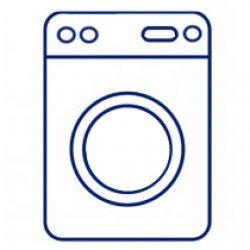Appliance Types
- Air Conditioner
- Automobile
- Chainsaw
- Circular Saw
- Dishwasher
- Drills
- Dryer
- Drywall Screw Gun
- Furnace
- Gas Fireplace
- Gas Grill
- Gas Patio Heater
- Grinder
- Heat Pump
- Impact Driver
- Impact Wrench
- Microwave
- Nailer
- Orbital Sander
- Pool Heaters
- Powerwall
- Range
- Refrigerator
- Television
- Washer
- Water Heater
Appliance Brands
- A.O. Smith
- AccuCold
- Admiral Craft
- AGA
- Airrex
- Amana
- Ambiance
- American Range
- American Standard
- American Water Heaters
- Aquacal
- Armstrong
- Asko
- Avanti
- Avenlur
- Azure
- Beko
- Bellfires
- Bertazzoni
- Blackstone
- Blaze
- Blomberg
- BlueStar
- Bosch
- Bradford White
- Bromic
- Bryant
- Cafe
- Calcana
- Capital
- Carrier
- Char-Broil
- Char-Griller
- Chrysler
- Coates
- Coleman
- Comfortmaker
- Commercial Chef
- Continental
- Cosmo
- Cove
- Crown Verity
- Dacor
- Daikin
- Danby
- Danfoss
- DaVinci
- DCS
- Deco
- DeWALT
- Ducane
- Dyna-Glo
- Dyson
- EcoSmart
- Electrolux
- Element4
- Empava
- Equator
- Eurodib
- European Home
- Everdure
- Farberware
- Fhiaba
- FibroPool
- Fire Sense
- Fisher
- FiveStar
- Flare
- Flash Furniture
- Focus
- Ford
- Forno
- Forte
- Frigidaire
- Fulgor Milano
- Gaggenau
- GE
- General Motors
- GlowBrand
- Goodman
- Grundig
- GSW
- Haier
- Hayward
- Heatstar
- Heil
- Hestan
- Hisense
- Hitachi
- Hotpoint
- iio
- Ilve
- Impecca
- Ingignia
- Insignia
- JennAir
- John Wood
- Keeprite
- Kenmore
- Kenyon
- KitchenAid
- Kucht
- La Cornue
- Lennox
- LG
- Liebherr
- Lifetime
- Lion
- Luxaire
- Lynx
- Magic Chef
- Marvel
- Maytag
- McQuay
- MicroFridge
- Midea
- Miele
- Migali
- Monogram
- Montigo
- Mr Heater
- Napoleon
- Navien
- Nexgrill
- Noritz
- Panasonic
- Patio Comforts
- Payne
- Pentair
- Perlick
- PITT
- Premier
- Raypak
- Real Fyre
- Regency
- Reliance
- Rheem
- Rinnai
- Roma
- Ruud
- Saber
- Samsung
- Schwank
- Sharp
- Smeg
- Solas
- Sony
- Spartherm
- Speed Queen
- StaRite
- State Water Heaters
- Stiebel Eltron
- SubZero
- Summerset
- Summit
- SunGlo
- SunPak
- Sunpentown
- SunStar
- Superiore
- Takagi
- TCL
- TEC
- Tempstar
- Tesla
- Thermador
- Thor Kitchen
- Toshiba
- Town and Country
- Toyota
- Traeger
- Trane
- Twin Eagles
- U-Line
- Unique
- Vaillant Group
- Valor
- Verona
- Victory
- Viessmann
- Viking
- Vizio
- Weber
- Westinghouse
- Whirlpool
- Whynter
- York
- ZLINE
Article Categories
- Air Conditioners
- Appliance Care
- Appliance News
- Dishwasher News
- Drying Machines
- Furnaces
- Gas Fireplaces
- Microwaves
- Pool Heaters
- Refrigerators
- Stoves - Ranges
- Tips and Tricks
- Washing Machines
- Water Heaters
More Articles

Dryer Troubleshooting
A clothes dryer, also known as tumble dryer, is a powered household appliance that is used to remove moisture from a load of clothing, bedding and other textiles, usually shortly after they are washed in a washing machine. Otherwise, clothes may also be dried by natural evaporation and, if available, sunlight, on an outdoor or indoor clothes line or clothes horse.
Dryer Won't Heat
If you have a gas dryer, check the supply line valve. It must be fully open to operate properly.
Electric dryers use two household fuses or circuit breakers. The drum can still turn if just one fuse is blown, but there will be no heat. You may need to replace both fuses or reset both circuit breakers.
If the dryer's thermal fuse has blown due to a power surge or other mechanical problem, the dryer won't heat. These fuses are easy and inexpensive to replace. Locate your user or repair manual, and you can find replacement parts at online retailers.
Dryer Cuts off After a Short Period
When a dryer shuts off abruptly after "working perfectly," it is usually a problem with either the thermostat, the thermal resistor, or the thermal fuse that turns off the dryer to prevent overheating. You can check each of these parts with a voltage meter to determine if they are working properly or if they need to be replaced.
Dryer Making Unusual Noise
If you hear a thumping sound or see vibrations, the dryer may not be level. Each leg of the dryer can be adjusted and it should be leveled front to back and side to side.
Check for small items caught in the dryer drum. Coins, buttons, or paper clips can get caught between the drum and the front or rear of the dryer. Use a flashlight to inspect the drum and remove any objects. Always check and empty pockets before loading a washer or dryer.
If you hear loud thumping, the clothing may be knotted or balled up. You may not be loading the dryer correctly. Remove the knotted items and give them a shake before reloading to complete the drying cycle.
If you have a gas dryer and hear a clicking sound, this is normal. It is the gas valve opening and closing.
Dryer Won't Start
The door latch may not be engaging. Check the latch for lint and clean it completely so that the door closes properly. When the lint is removed, use a bit of rubbing alcohol on a cotton swab to clean metal contact areas.
Check the power supply, including fuses and circuit breakers. When replacing a fuse, be sure to use a time-delay fuse.
Check the dryer's internal thermal fuse. If it is blown, the dryer will not start.
If you have a push start knob, it may not be engaging correctly. Remove the knob and clean behind it, removing any dirt and lint.
Clothes Take Forever to Dry
Clean the lint filter. A filter loaded with lint reduces the airflow necessary for quick drying. You can recycle the lint for crafts.
Clean the outside exhaust vent. If the outside vent is not opening and closing properly, moisture is trapped inside the dryer drum. Run the dryer for five or 10 minutes. Go outside and hold your hand under the outside exhaust hood to check air movement. If you do not feel air coming from the vent, it is blocked with lint and must be cleaned thoroughly. Remove any snow or leaves that may be blocking the vent. Also, make sure the dryer vent duct is clean.
Check the dryer vent exhaust pipe. Be sure it is connected properly and has no kinks. If you are using a flexible hose, replace it with a rigid system.
Reduce the size of each load. An overcrowded dryer does not allow clothes to tumble freely and receive heat evenly.
Be sure the dryer is in a room that is above 45 F. A dryer cannot work efficiently in a room that is too cold.
Check the air circulation around the dryer. If your dryer is in a closet, there must be ventilation openings at the top and bottom of the door. The front of the dryer requires a minimum of one inch of airspace and the back should have at least five inches.
Do not allow fabric softener dryer sheets to block the airflow into the lint trap or grill. Never use more than one sheet per load.
Clothes Are Covered With Lint
Clean the lint screen. If the screen is full and cannot hold any more lint, then the lint is going to stay on your clothes.
Clothes Aren't Dry After Automatic Timed Cycle
The load may not be connecting with the moisture sensor strips because there are not enough clothes in the drum or the dryer is not level. Small loads should be dried on timed dry rather than automatic dry.
Clean the moisture sensor strips. The moisture sensors are usually two metal strips located inside the front edge of the dryer drum. If they become coated with residue from fabric softener sheets, they won't work properly. Clean them with a cotton ball and rubbing alcohol.




